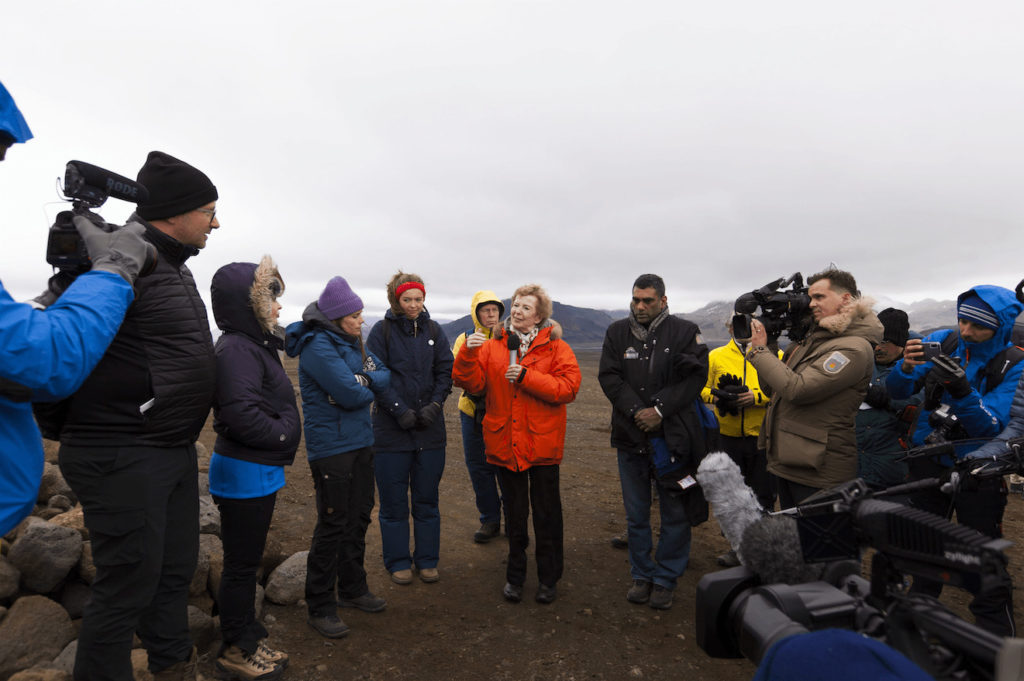Iceland has marked its first-ever loss of a glacier to climate change as scientists warn that hundreds of other ice sheets on the subarctic island risk the same fate.
With poetry, moments of silence and political speeches about the urgent need to fight climate change, Icelandic officials, activists and others bade goodbye to what once was a glacier.
As the world recently marked the warmest July ever on record, a bronze plaque was mounted on a bare rock in a ceremony on the barren terrain once covered by the Okjokull glacier in western Iceland.
After about 100 people made a two-hour hike up a volcano, including Iceland’s prime minister, Katrin Jakobsdottir, former UN human rights commissioner, Mary Robinson, and local reseachers ,installed a memorial plaque to the glacier, now called just “Ok,” minus the Icelandic word for glacier.

In 2014, “we made the decision that this was no longer a living glacier, it was only dead ice, it was not moving”, a glaciologist with the Icelandic Meteorological Office told.

The glacier used to stretch six square miles and residents reminisced about drinking pure water thousands of years old from Ok.
“The symbolic death of a glacier is a warning to us, and we need action,” former Irish president Mary Robinson said.
This was Iceland’s first glacier to disappear. But an expert said all of the nation’s ice masses will be gone in 200 years.
Iceland loses about 11bn tonnes of ice per year, and scientists fear all of the island’s 400-plus glaciers will be gone by 2200, according to Howe. Glacierscover about 11% of the country’s surface.
Glaciologists stripped Okjokull of its glacier status in 2014, a first for Iceland. In 1890, the glacier ice covered 16sq km (6.2 square miles) but by 2012 it measured just 0.7sq km, according to a report from the University of Iceland in 2017.



